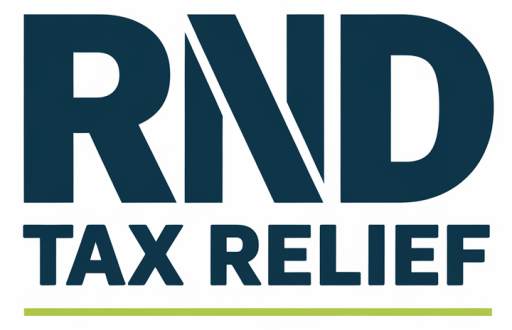HMRC and R&D Tax Relief: A Complete Guide for UK Businesses
Innovation costs money, but the UK government recognises that investing in new ideas is key to long-term growth. That is why HMRC offers R&D tax relief, giving businesses financial support to reduce the risk of innovation.
If you run a company in the UK and spend money on research and development (R&D), you could be entitled to claim back a significant portion of your costs. This guide explains what R&D tax relief is, who can apply, how HMRC reviews claims, and the steps you can take to maximise your benefit.
What is R&D Tax Relief and How Does HMRC Support It?R&D tax relief is a government incentive designed to encourage companies to invest in innovation. It works by allowing businesses to claim back a portion of their qualifying R&D expenditure through reduced corporation tax or as a payable cash credit.HMRC is the body responsible for managing these claims. Their role is to:
- Set the rules and eligibility criteria
- Review applications for accuracy and compliance
- Ensure that only genuine research and development projects qualify
The scheme is part of the government’s wider ambition to make the UK a global leader in innovation by 2035. You can read more about the background of R&D and how it drives business growth.
Who Can Claim R&D Tax Credits?
The scheme is open to a wide range of companies, regardless of sector. Any business that has tried to create or improve a product, service, or process through technological or scientific advancement may qualify.
Industries that often benefit include:
- Software development and IT
- Engineering and advanced manufacturing
- Healthcare and pharmaceuticals
- Energy and renewable technologies
- Aerospace and defence
- Agriculture and agritech
Both SMEs and large companies can apply, though the rules differ slightly. SMEs usually benefit from higher rates of relief, while large companies claim through the RDEC (Research and Development Expenditure Credit) scheme.
Learn more about R&D tax relief and how it applies to different business sizes.
What Costs Qualify for R&D Tax Relief?
Not every business expense counts, but many project-related costs do. HMRC recognises the following categories as eligible:
- Staff costs salaries, NIC, pensions for employees directly involved in R&D
- Subcontractors and freelancers depending on scheme type
- Consumables materials and utilities used during the project
- Software licences and cloud computing directly tied to the R&D work
- Clinical trial costs relevant to the pharmaceutical sector
Real-Life Example
A small engineering firm developing a new type of energy-efficient turbine may be able to claim:
- The salaries of engineers working on prototype designs
- The cost of materials used for testing
- Subcontractor fees for specialist technical support
For a deeper breakdown, see our guide to R&D tax credits.
How HMRC Reviews and Processes R&D Claims
HMRC’s job is to make sure only genuine innovation is rewarded. This means every claim is checked against strict criteria. When you submit an R&D claim, HMRC will look at:
- Whether your project aims to achieve scientific or technological advancement
- If there was a genuine technical uncertainty your team had to overcome
- How your costs line up with the work carried out
They also require a technical narrative that explains the project in plain terms. Without this, your claim could face delays or rejection.
Recent Changes to HMRC’s R&D Tax Credit Policies
Over the last few years, HMRC has tightened the rules to reduce fraudulent claims and improve compliance. Some of the most notable updates for 2024–2025 include:
- Stricter documentation requirements
- Expanded definition of qualifying costs (such as some cloud computing expenses)
- A new online submission process for additional information forms
- Increased focus on identifying genuine innovation
For official updates, check directly with HMRC.
Benefits of Claiming R&D Tax Relief for Your Business
The financial advantages of claiming R&D tax credits can be transformative. Businesses that apply successfully often see:
- Stronger cash flow freeing up money to reinvest
- Ability to hire skilled staff supporting further innovation
- Lower financial risk making it easier to take bold steps
- Improved resilience helping companies weather economic uncertainty
- Long-term competitiveness keeping pace with global markets
For many SMEs, this injection of funds is the difference between shelving an idea or bringing it to market.
How to Stay Compliant with HMRC Requirements
Compliance is critical when claiming R&D tax relief. If HMRC questions your claim, it can lead to long delays or even reduced payouts. To avoid this, businesses should:
- Keep detailed project records from day one
- Train staff on what qualifies as R&D activity
- Use HMRC’s advance assurance scheme for smaller companies
- Work closely with an R&D tax relief advisor
By following these steps, you can reduce the risk of an enquiry and speed up your claim.
Real-World Examples of Successful R&D Claims
Case Study 1: Software SME
A small app development company created a new AI-driven scheduling tool. The costs of developers’ time, software licences, and testing were claimed successfully, providing a five-figure tax relief that funded further product development.
Case Study 2: Manufacturing Firm
A mid-sized manufacturer redesigned its production line to reduce waste. By claiming back R&D costs on prototype designs and trial runs, the business gained enough savings to expand its factory and hire more staff.
How to Apply for R&D Tax Relief with HMRC
The process of claiming can feel daunting, but broken down it looks like this:
- Identify qualifying projects and costs
- Prepare a technical narrative explaining how the project achieved advancement
- Submit financial records showing eligible expenditure
- Complete the claim as part of your company tax return (CT600)
- Respond to HMRC if they request additional details
It’s important to keep clear records throughout the process to strengthen your claim.
Get Help With Your HMRC R&D Tax Relief Claim Understanding the rules is one thing, but applying them correctly is another. Many businesses lose out simply because they don’t realise what qualifies or fail to keep the right records.
Ready to maximise your R&D claim? Book a free consultation today.
Our team specialises in helping UK businesses prepare strong, compliant claims that stand up to HMRC review.
FAQs
What is HMRC’s role in R&D tax relief?
HMRC manages the scheme, sets the rules, and reviews claims to ensure compliance.
How do I know if my project qualifies?
If you faced a genuine scientific or technical uncertainty and worked to overcome it, your project may qualify.
How much can I claim?
The amount depends on your size and scheme type. SMEs often receive a higher rate of relief than large companies.
What documents are required?
Technical reports, project descriptions, financial records, and your company tax return.
Can small businesses apply?
Yes, SMEs are often the biggest beneficiaries of R&D tax relief.






